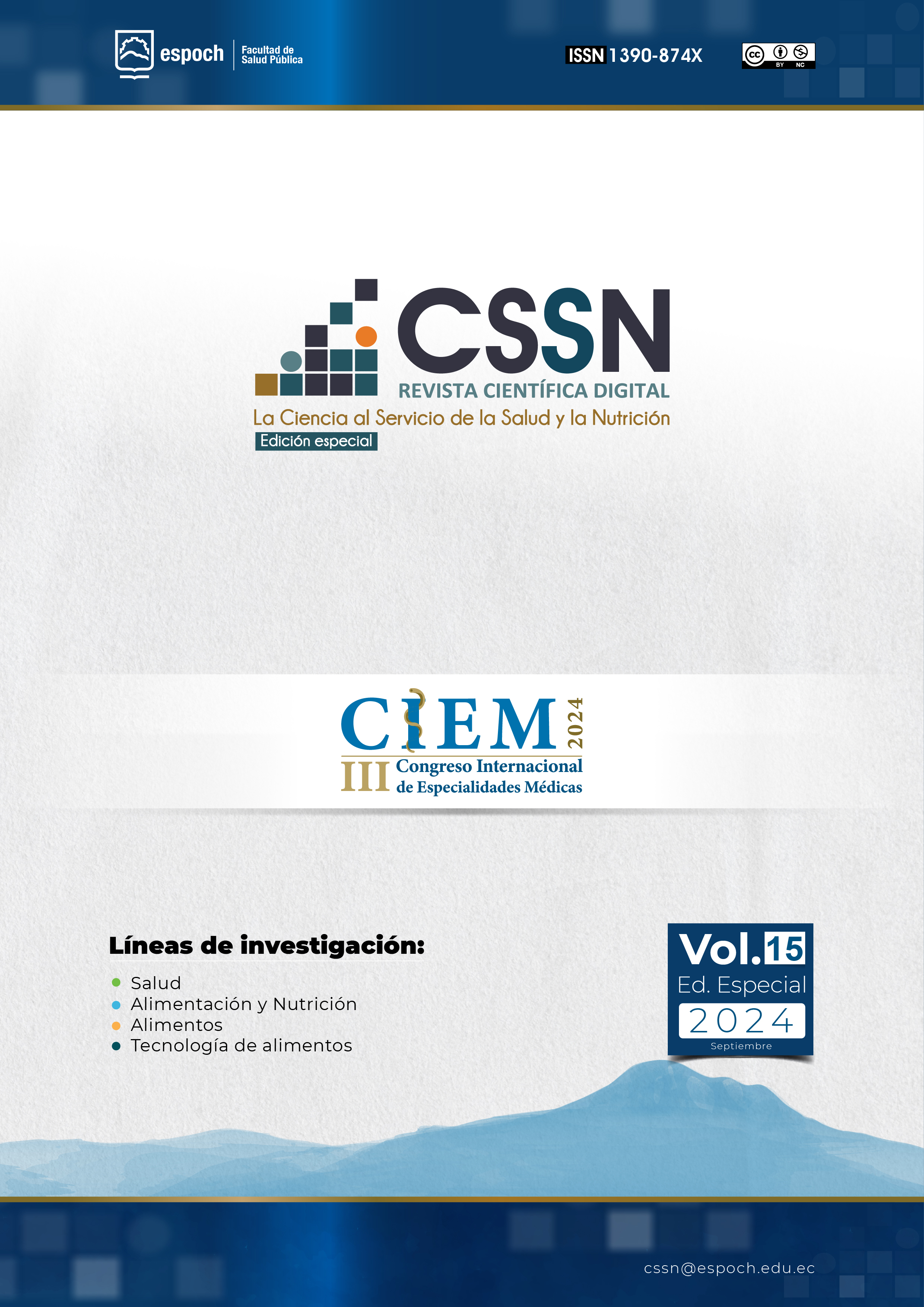Interactive material to raise awareness of unsafe water consumption as a cause of child malnutrition
DOI:
https://doi.org/10.47187/cssn.Vol15.IssEd.Esp.299Keywords:
Child Malnutrition, Water Consumption, Child Health, Graphic Design, Community AwarenessAbstract
This article was aimed to create interactive materials using various areas of graphic design to raise awareness about water consumption as a cause of child malnutrition at "Rita Peñafiel" Child Development Center, located in the Chambo canton. To achieve this goal, an analysis of the issue was carried out, identifying the relationship between water quality and child malnutrition as the primary cause. The study was conducted using a quantitative, analytical methodology, covering a population of 25 people, all of whom were surveyed. The results revealed that 92% of the respondents lacked information about child malnutrition related to the consumption of unsafe water, suggesting a significant deficiency in the community's awareness of this issue. The analysis also indicated a high rate of child malnutrition in the sector, highlighting the importance of implementing educational and awareness strategies to improve safe water consumption habits among children. These findings underscore the need for targeted intervention to reduce child malnutrition through education and the creation of graphic materials that promote safe water consumption.
Downloads
References
UNICEF. (2021). Diagnóstico de los derechos del niño y el adolescente al agua potable y saneamiento básico en Ecuador. Recuperado de https://www.unicef.org/ecuador/sites/unicef.org.ecuador/files/2021- 03/Ecuador_DCI_Agua-Saneamiento.pdf
UNICEF. (Fecha desconocida). Combatir la desnutrición a través del acceso a agua segura. Recuperado de: https://www.unicef.org/ecuador/historias/co mbatir-la-desnutrici%C3%B3n- trav%C3%A9s-del-acceso-agua-segura
UNICEF. (2021). Diagnóstico de los derechos del niño y el adolescente al agua potable y saneamiento básico en Ecuador. Recuperado de https://www.unicef.org/ecuador/sites/unicef.org.ecuador/files/2021-03/Ecuador_DCI_Agua-Saneamiento.pdf
UNICEF. (s/f). Combatir la desnutrición a través del acceso a agua segura. Recuperado de https://www.unicef.org/ecuador/historias/combatir-la-desnutrici%C3%B3n-trav%C3%A9s-del-acceso-agua-segura
World Health Organization (WHO). (2019). Preventing diarrhoea through better water, sanitation and hygiene: Exposures and impacts in low- and middle-income countries. Recuperado de https://www.who.int/publications/en/
Organización Mundial de la Salud. (2017, 13 de abril). Depressive disorder (depression). https://www.who.int/news-room/fact-sheets/detail/depression
Porto, J. P. (2023). Método analítico. Definición.de. https://definicion.de/metodo-analitico/
De E. (2019). Tipos de Investigación: cuáles son, clasificación y ejemplos. Enciclopedia Significados. https://www.significados.com/tipos-de-investigacion/
Godoy, F. (2022). Te contamos en qué consiste una investigación correlacional. Tesis y Másters Colombia. https://tesisymasters.com.co/investigacion-correlacional/SurveyMonkey. (s.f.). ¿Qué es la investigación no experimental? Recuperado el 19 de julio de 2024, de https://es.surveymonkey.com/mp/que-es-la-investigacion-no-experimental/
Published
How to Cite
Issue
Section
License
Copyright (c) 2024 LA CIENCIA AL SERVICIO DE LA SALUD Y NUTRICIÓN

This work is licensed under a Creative Commons Attribution-NonCommercial 4.0 International License.




